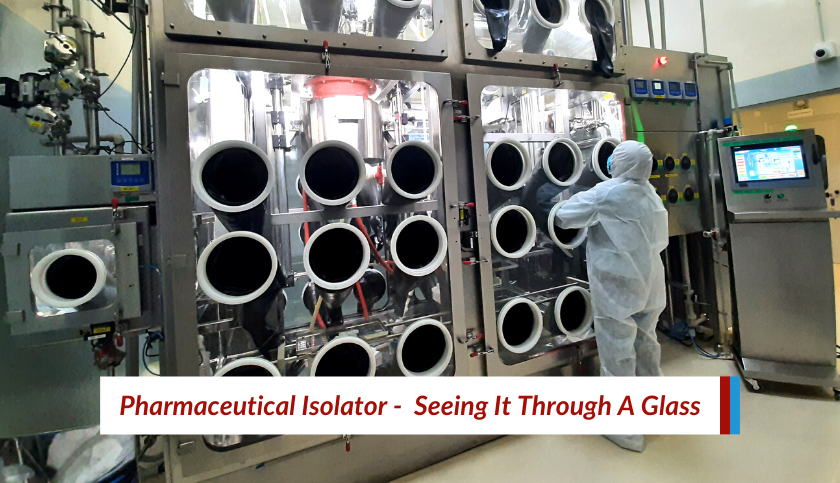Pharmaceutical Isolator – Seeing it through glass

In a spur of a moment, something caught us off guard. It happened to be a medium-sized stone that made its way from the huge tires of a cargo truck that had just moved past us. Astonished as we were by the loud bang on our windshield, it took us quite some time to sync in the dreadful encounter. However, our cinephile mind could still able to connect this scene with the legendary flick – Final Destination.
But what came as our true saviour was the windshield, which took it upon itself with just a minor scratch.
And as all learning comes through experience, this encounter got my mind enlightened with some practical aspects and facts on vehicles and road safety:
1) Your vehicle should always stay clear of large moving vehicles
2) Everything is not what it seems – Apparently, the fragile modern glass is one of the Engineering Marvels, capable of protecting us from unexpected intrusions.
This experience also redirected my attention towards the irony of a glass. It may be toughened yet it continues to remain a fragile product, but can surely serve as a protective guard in such situations.
Being a physics enthusiast, my thoughts didn’t stop here as I delved deeper into the subject. I came to wonder how toughened glass can significantly contribute in critical medical spheres, viz. hospitals and laboratories, as in the case of Pharmaceutical Isolators.
Given below are some of its important aspects:
Considering the strength and durability, toughened glass are physically and thermally solid. In fact, research shows that such glass can withstand surface compression of at least 10,000 lbs per square inch.
Toughened glass is manufactured through a tempering process (also called tempered glass) which involves intense glass heating followed by rapid cooling. This process ensures that glass becomes tough enough and only a much higher impact force can break it. In addition, such a robust glass provides flexibility in having cut-out holes on the glass for glove ports and also for wiper fitments.
The tempering process guarantees no glass breakage during routine usage of the isolator. Even in case of a strong clamping force during operation, there is only a minor impact.
Moreover, toughened glass disintegrates into hundreds of smaller pieces even when it gets broken, making it relatively safe by reducing the risk of injury.
On the other hand, laminated glass for isolators is used in some of the special applications. Apart from being used in car wind shields, the major advantage of laminated glass is that it doesn’t break into smaller pieces. Rather it is held together by a thin lamination of polyvinyl butyral (type of plastic), a protective interlayer between the two sheets of glass. This property of the laminated glass safeguards people against glass injuries by staying intact despite getting crushed. Furthermore, it plays an equally crucial role in pharmaceutical isolators by staying in its position irrespective of the chamber’s pressure, temperature, or sterility.
Laminated glass also protects itself and the operators when exposed to hazardous environments or potentially dangerous situations such as glass breakage.
It brings us to making a pragmatic choice between the two alternatives for glass isolators – Laminated or Toughened.
The answer to this question would be subject to the application required for the process to be conducted in isolator as much as on the dimensional requirements.
In case the glass door is dimensionally big in size and may require frequent opening, toughened glass could be avoided as it will be more susceptible to clamping stresses over the periphery, whereas laminated glass will sustain the basic wear and tear.
If the glass door is of a relatively standard size, then laminated glass may prove to be an over-design since toughened glass will by itself be capable of providing the required strength.
If the required application has a possibility of glass breakage or any similar accident, then the need for having laminated glass would become a must.
It is also important to note that laminated glass is relatively weaker than toughened glass. Besides, the same is exponentially expensive due to its complex manufacturing process. Nonetheless, the laminated glass must be need-based and used as and when the application demands it to be so.
We, at Fabtech Technologies, have been successfully providing customised solutions to a number of clients based on their functional requirement.
To understand and learn more about the choice of glass for your next containment isolator you can fill in the below form. We would love to hear from you!
Categories
Recent Posts
Subscribe
Never miss a post from Fabtech. Sign up to receive updates direct to your inbox.
